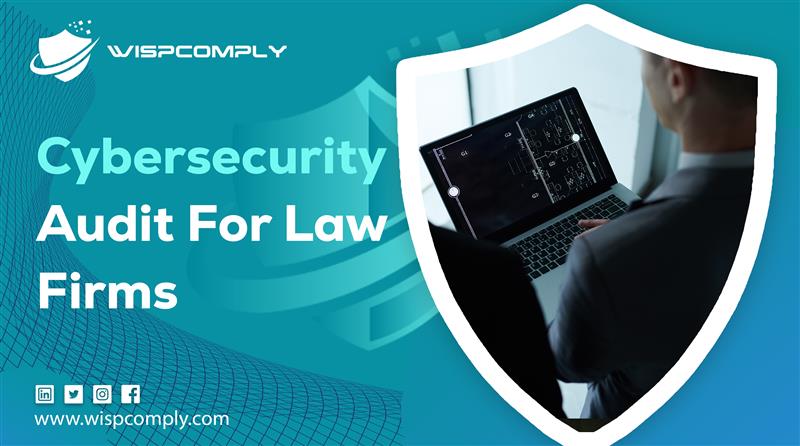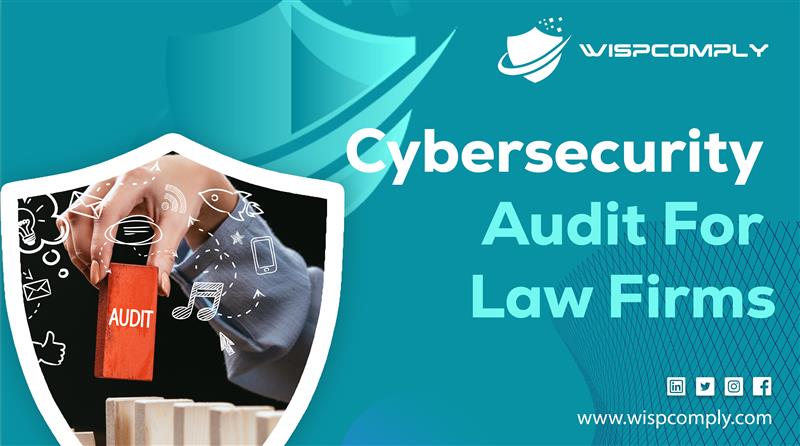
Table of Contents
Cybersecurity Audit For Law Firms: Top 10 Best Practices
With sensitive client data, financial records, and confidential case files stored across computer systems and the cloud, firms have become prime targets for cyberattacks. From phishing scams to ransomware threats, cyberspace is more dangerous than ever.
This is where a Cybersecurity Audit For Law Firms becomes crucial. It’s more than just a checklist—it’s your roadmap to protecting your firm’s reputation, staying compliant with the law, and keeping your clients’ trust intact. With increasing pressure from regulatory compliance standards like GDPR, HIPAA, ABA guidelines, and state bar rules, the need for regular audits is no longer optional—it’s essential.
Let’s walk through the 10 best practices that will help your law firm stay safe, secure, and one step ahead of cybercriminals.
Top 10 Best Practices For Conducting a Cybersecurity Audit For Law Firms
These best practices are your defense plan, covering everything from technical upgrades to team training. Whether you’re part of a small practice or a large firm, these tips can help you boost your cybersecurity without needing a degree in computer science.
#1: Understand the Regulatory and Compliance Landscape
Before diving into tools and tech, it’s key to understand the legal side of cybersecurity. Law firms handle data protected by strict rules, including:
- GDPR (for EU clients)
- CCPA (for California-based data)
- HIPAA (for healthcare-related cases)
- State Bar and ABA rules
If your firm doesn’t meet these standards, you could face fines, lawsuits, or even a damaged reputation. That’s why aligning your audit with trusted frameworks like NIST or ISO 27001 helps you stay compliant and focused. These standards are the backbone of security engineering and management in the legal world.
#2: Conduct a Comprehensive Risk Assessment
Start by figuring out what’s at stake. Ask yourself:
- What data is most valuable? (Client files, financial records, case notes)
- Who has access to it?
- What could go wrong?
Use risk frameworks like NIST CSF or FAIR to find your weak spots. These tools help you understand your attack surface—basically, how many ways a hacker can get in. Once you see your digital blind spots, you can fix them before a real threat shows up.
#3: Implement Strong Access Controls
You wouldn’t let just anyone walk into your office and browse client files—so don’t let them into your digital files either.
Here’s how to tighten access:
- Use Multi-Factor Authentication (MFA) on all accounts.
- Limit access based on job roles (Role-Based Access Control – RBAC).
- Regularly remove access from ex-employees and old vendors.
These steps help reduce your exposure and keep your information technology systems safe.
#4: Encrypt Sensitive Data
Encryption is like locking your information in a digital safe.
- Encrypt data at rest (on hard drives, databases).
- Encrypt data in transit (during emails or file transfers).
- Use end-to-end encryption for client messages.
Don’t forget to rotate and manage your encryption keys safely—this is often where cybercrime sneaks in unnoticed.
#5: Secure Email and Communication Channels
Law firms are popular targets for Business Email Compromise (BEC) and phishing scams. Just one wrong click can give hackers the keys to your firm.
Stay protected by:
- Installing email filters and using DMARC, SPF, and DKIM.
- Training staff to recognize suspicious emails.
- Using secure client portals for sensitive communication.
Secure communication isn’t just smart—it’s part of your responsibility in the Information Age.

#6: Regularly Update and Patch Systems
Old software is an open door for hackers. Don’t give them an easy way in.
- Set up a patching schedule for your computing infrastructure (OS, apps, firmware).
- Turn on automatic updates where possible.
- Track which systems have been updated (or skipped).
This is one of the simplest ways to prevent cybercrime, yet many firms forget or delay it.
#7: Monitor and Log All Network Activity
You can’t fight what you can’t see. Monitoring your digital traffic helps you catch unusual behavior—like an insider accessing data late at night, or someone trying to sneak files out.
Use tools like SIEM (Security Information & Event Management) to:
- Track logins, data movements, and failed attempts.
- Keep logs for future audits and investigations.
- Alert you when something odd is happening.
This is where systems engineering meets smart defense.
#8: Train Employees on Cybersecurity Best Practices
Even the best tools won’t help if your team keeps clicking on fake emails.
Here’s what you can do:
- Run security awareness workshops.
- Simulate phishing attacks to test their responses.
- Teach safe habits (like using VPNs and avoiding public Wi-Fi).
In a world ruled by digital media, your staff are the front lines of crime prevention.
#9: Develop an Incident Response Plan
What happens when things go wrong? A strong incident response plan can make all the difference.
Your plan should cover:
- Who does what (IT, legal, public relations)?
- How do you contain, report, and recover?
- When do you notify clients or authorities?
Run practice drills (called tabletop exercises) to make sure your team is ready. Being prepared is the key to keeping your critical infrastructure running after a cyberattack.
#10: Perform Regular Third-Party Vendor Audits
Vendors are part of your firm’s telecommunications, software, and cloud ecosystem—but they can also be a weak link.
Ask yourself:
- Do your vendors follow proper security policies?
- Do contracts include breach notification clauses?
- Are they protecting data the same way you do?
In the service industries, your safety depends on theirs. Make vendor security a part of your audit process.
Conclusion
A Cybersecurity Audit For Law Firms isn’t just a box to tick—it’s your lifeline in a world full of digital risks. From secure communication to ongoing training, each step brings your firm closer to a safe, stable, and trusted digital environment.
In today’s information and communications technology landscape, law firms face more threats than ever before. But with the right plan and tools in place, you can stay ahead of hackers and meet your legal obligations with confidence.
Want to make this process smoother? Consider using WispComply, a tool built to simplify audits, improve compliance, and protect your practice from cyber threats—without the tech headaches.
FAQs
1: What is a cybersecurity audit for law firms?
A cybersecurity audit is a full check-up of your firm’s tech systems. It finds weak spots, checks for compliance, and helps protect sensitive data.
2: Why are law firms popular targets for cybercrime?
Because they hold confidential information, legal records, and financial data, all valuable to hackers in the age of cyberwarfare and information science.
3: What tools can help during a cybersecurity audit?
Tools like NIST CSF, ISO 27001, and SIEM systems are commonly used. Platforms like WispComply also offer tailored help for legal firms.
4: How often should a cybersecurity audit be done?
At least once a year—or whenever you add new technology, hire new staff, or change vendors.
5: What’s the risk of skipping a cybersecurity audit?
You could face regulatory fines, loss of client trust, or even full system shutdowns due to cyber–physical system attacks.
